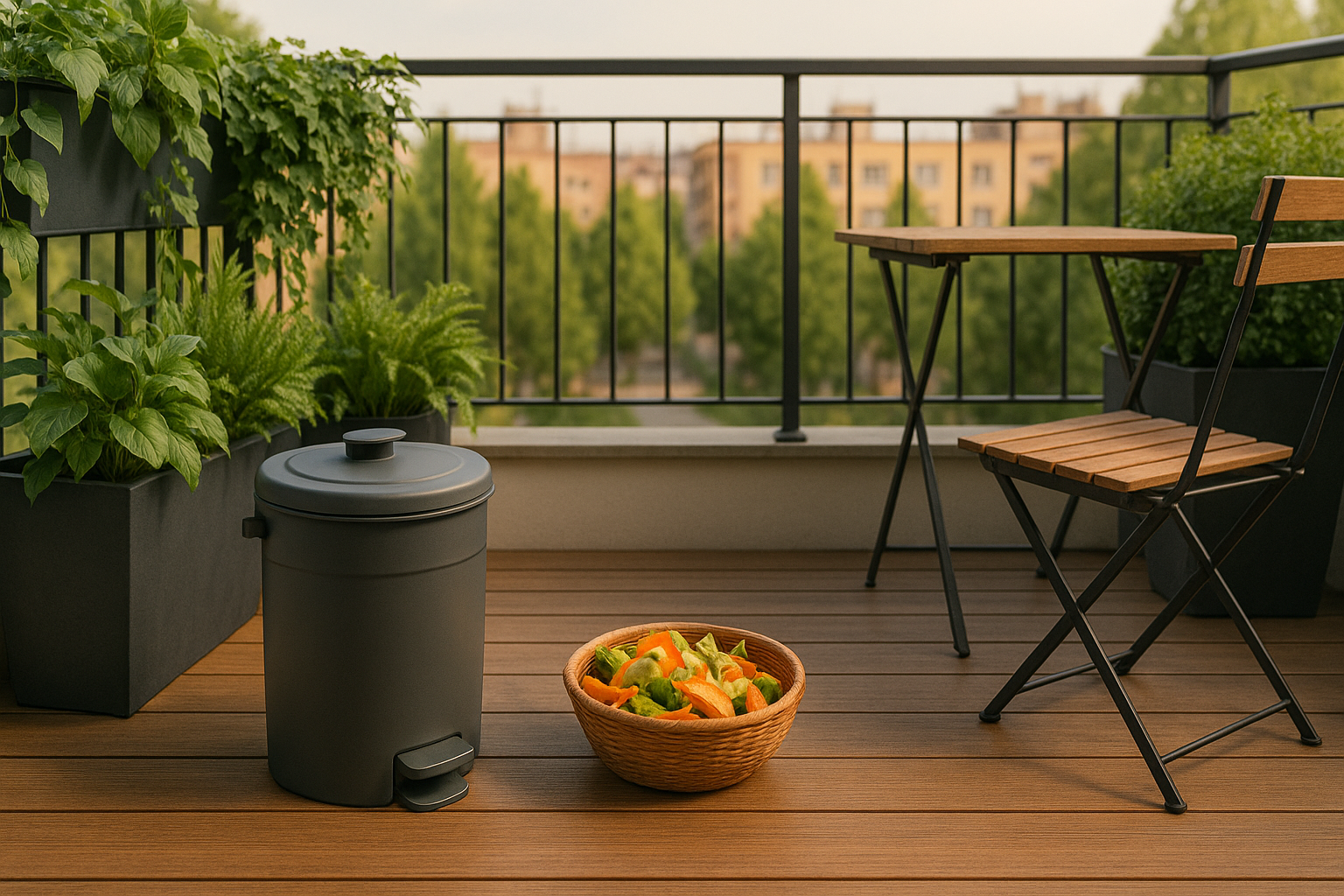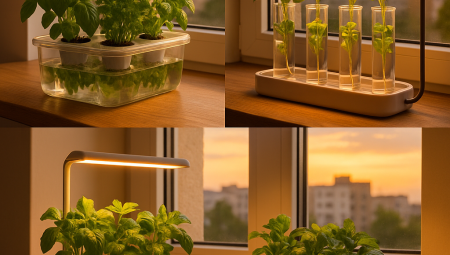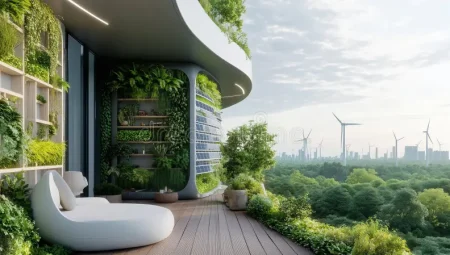Do you envision a greener, more sustainable lifestyle, but feel hampered by your small urban balcony and the dreaded thought of composting smells? You’re not alone. For many city dwellers, the idea of turning food scraps into valuable garden gold is appealing, yet the fear of odors and limited space often puts a swift end to those eco-friendly dreams. However, in 2025, advancements in composting technology and methods mean that finding an odorless compost bin for small urban balconies is not just possible—it’s incredibly practical. This comprehensive guide is designed for environmentally conscious urbanites, apartment gardeners, and anyone ready to reduce waste and enrich their plants, all without a hint of unpleasant smells.
The Silent Revolution: Why Odorless Composting is Essential for Urban Living
With over 60% of the global population expected to live in urban areas by 2030 (World Bank), the pressure on waste management systems is immense. Food waste alone accounts for a significant portion of landfill content, generating potent greenhouse gases. Composting offers a powerful solution, diverting organic waste from landfills and creating nutrient-rich soil. Yet, for those residing in apartments or condos, the traditional image of a large, pungent compost pile simply doesn’t fit.
This is where the demand for an odorless compost bin for small urban balconies skyrockets. The urban environment demands solutions that are compact, efficient, and, above all, discreet. Modern composting methods and specialized bins now actively prevent smells, making it a viable and pleasant activity for even the most cramped outdoor spaces. Embracing odorless composting isn’t just about personal convenience; it’s a vital step towards hyper-local sustainability and reducing your carbon footprint from your own small balcony.
The Benefits of Odorless Balcony Composting
- Environmental Impact: Diverts food waste from landfills, reducing methane gas emissions.
- Nutrient-Rich Soil: Creates free, high-quality compost for your balcony plants, improving soil health.
- Waste Reduction: Significantly cuts down on household organic waste.
- Pest Deterrence: Odorless systems are less likely to attract rodents, flies, or other unwanted pests.
- Space Efficiency: Designed for compact living, fitting seamlessly onto small balconies.
- Community Harmony: No unpleasant smells for you or your neighbors!
Decoding Odorless Composting: What Makes a Bin Truly Smell-Free?
The key to an odorless compost bin for small urban balconies lies in understanding the science behind decomposition. Odors typically arise from anaerobic (lack of oxygen) decomposition, which produces foul-smelling gases like hydrogen sulfide and ammonia. Effective odorless composting systems prioritize aerobic (with oxygen) conditions or employ specific biological processes to break down waste cleanly.
Key Factors for Odorless Operation
- Aeration: Sufficient airflow is paramount. Many odorless systems incorporate ventilation holes, porous materials, or tumbling mechanisms to ensure oxygen reaches all parts of the decomposing matter.
- Carbon-to-Nitrogen Ratio (C:N): The right balance of “greens” (nitrogen-rich: food scraps) and “browns” (carbon-rich: shredded paper, dried leaves, cardboard) is crucial. Too many greens can lead to a slimy, smelly, anaerobic mess.
- Moisture Control: The compost should be damp like a wrung-out sponge, not soaking wet. Excess moisture restricts airflow and encourages anaerobic conditions.
- Temperature: Active composting generates heat. While hard to achieve in small, passive bins, some systems aim for warmer temperatures that promote faster, more efficient aerobic decomposition.
- Microbial Activity: Healthy populations of aerobic bacteria are what truly break down organic matter without odor. Some systems introduce specialized microbes to kickstart this process.
Top 5 Odorless Compost Bins for Small Urban Balconies in 2025
Here are the most effective and widely acclaimed compost bins designed for small urban balconies that promise an odorless experience in 2025:
1. The Vermicompost Bin (Worm Composting)
Why it’s Odorless & Ideal for Balconies:
Vermicomposting, or worm composting, uses specific species of earthworms (like Red Wigglers) to break down food scraps. This process is inherently aerobic and incredibly efficient. When managed correctly, worm bins are virtually odorless because the worms consume waste quickly, and the beneficial microbes they introduce prevent anaerobic decay. They are compact, can be multi-tiered, and produce nutrient-rich “worm castings” (worm poop), a highly prized soil amendment.
Key Features to Look For:
- Multi-tiered design: Allows for easy expansion and separation of finished compost.
- Ventilation: Good airflow is key for worm health and odor prevention.
- Drainage tap (for “worm tea”): Collects nutrient-rich liquid fertilizer.
- Compact footprint: Fits snugly in a corner.
Best For:
Vegetable and fruit scraps, coffee grounds, tea bags, shredded paper/cardboard. Avoid meat, dairy, and oily foods.
2. The Bokashi Composting System
Why it’s Odorless & Ideal for Balconies:
Bokashi is not traditional composting; it’s a fermentation process. Food scraps are mixed with Bokashi bran (inoculated with beneficial microbes) and sealed in an airtight bin. This creates an anaerobic, pickling-like environment that ferments the waste, rather than rotting it. The process produces very little odor, often described as a yeasty or slightly sweet smell, and definitely not putrid. Once fermented (after about 2 weeks), the material can then be buried in a planter or mixed with soil to break down further.
Key Features to Look For:
- Airtight lid: Crucial for the anaerobic fermentation process.
- Drainage tap: To release “Bokashi tea,” a potent liquid fertilizer.
- Durable construction: Must withstand the acidity of fermentation.
Best For:
Almost all food waste, including meat, dairy, and cooked food (unlike traditional composting).
3. The Aerated Tumbler (Small-Scale)
Why it’s Odorless & Ideal for Balconies:
While most compost tumblers are too large for balconies, smaller, compact versions exist. Tumblers allow for easy and frequent turning, which provides excellent aeration and prevents anaerobic pockets from forming. Constant aeration is the primary defense against odors. Heat generation from active decomposition also helps break down materials faster.
Key Features to Look For:
- Compact size: Specifically designed for limited spaces.
- Easy-to-turn mechanism: A handle or sturdy barrel that spins smoothly.
- Ventilation holes: Essential for airflow.
- Durable, weather-resistant material: To withstand outdoor balcony conditions.
Best For:
Mixed food scraps, garden trimmings (if you have balcony plants), small amounts of shredded paper. Requires a good mix of “greens” and “browns.”
4. The DIY 5-Gallon Bucket Compost System (Enhanced Aeration)
Why it’s Odorless & Ideal for Balconies:
A standard 5-gallon bucket can be transformed into a surprisingly effective odorless compost bin for small urban balconies with proper modifications for aeration. The key is to add sufficient ventilation and manage your compostables carefully.
DIY Steps for Odorless Operation:
- Materials: Two 5-gallon buckets (one with a lid), a drill, landscape fabric or burlap, and a sturdy stick for turning.
- Construction: Drill numerous 1/2-inch holes around the sides and bottom of one bucket. This will be your composting chamber. Place this bucket inside the second, undrilled bucket (to catch any leachate). Line the bottom of the composting bucket with a layer of landscape fabric to prevent material from falling through large holes.
- Operation: Layer “greens” (food scraps) with plenty of “browns” (shredded paper, dried leaves, cardboard pieces). Use the stick to stir the contents daily or every other day to maximize aeration. Keep the lid on tightly when not stirring.
- Best For: Small amounts of fruit and vegetable scraps, coffee grounds, and tea bags.
- Pros: Extremely low cost, customizable, very compact.
- Cons: Requires manual turning, smaller capacity, requires diligence to remain odorless.
5. The Electric Kitchen Composter/Food Recycler
Why it’s Odorless & Ideal for Balconies:
While not a traditional compost bin, electric kitchen composters are an excellent odorless solution for balconies that produce a dry, sterile, and reduced “pre-compost” material. These appliances grind and heat food waste, dramatically reducing its volume and sterilizing it. The resulting material is not finished compost but can be safely added to outdoor soil or a traditional compost pile (if you later acquire one) without any odor. Many models include carbon filters for odor absorption.
Key Features to Look For:
- Built-in carbon filters: Essential for odor elimination during processing.
- Compact design: Countertop size, ideal for small spaces.
- Capacity: Matches your household’s food waste output.
- Noise level: Important for apartment living.
Best For:
All types of food waste, including meat, bones, and dairy. Perfect for those who want convenience and guaranteed odor control.
Featured Snippet Optimization: Your Quick Guide to Odorless Balcony Composting
How to Have an Odorless Compost Bin on a Small Urban Balcony?
To have an odorless compost bin on a small urban balcony, choose a system designed for minimal smell, such as a well-managed vermicompost bin, a Bokashi system, a small aerated tumbler, or an electric food recycler. Key practices include balancing “greens” and “browns” (e.g., food scraps with shredded paper), ensuring proper aeration by turning contents frequently (for tumblers/DIY bins), maintaining ideal moisture levels (damp, not wet), and avoiding meat/dairy in traditional systems unless using Bokashi or an electric composter.
Pro Tips for Guaranteed Odorless Composting on Your Balcony
- Balance is Key: Always aim for a 2:1 or 3:1 ratio of “browns” (carbon) to “greens” (nitrogen). This is the single most important factor in preventing odors. Keep a small container of shredded paper or dried leaves next to your compost bin for easy layering.
- Chop it Up: Smaller pieces break down faster and more efficiently, reducing the time for anaerobic conditions to set in.
- Don’t Overload: Especially with passive systems, avoid adding too much “green” waste at once. A little bit often is better than a lot at once.
- Keep it Covered: A well-fitting lid prevents pests and helps contain moisture, promoting proper decomposition.
- Location Matters: While your bin should be odorless, placing it in a well-ventilated spot on your balcony (e.g., not directly against a wall with no airflow) can provide an extra layer of protection.
- Active Management: Even “passive” systems benefit from occasional stirring or turning to introduce more oxygen.
Frequently Asked Questions (FAQ)
Q1: What causes compost to smell bad on a balcony?
Compost typically smells bad when it becomes anaerobic, meaning it lacks sufficient oxygen. This often happens due to an imbalance of materials (too many “greens” like food scraps, not enough “browns” like carbon-rich paper), excessive moisture that compacts the material, or a lack of turning/aeration. These conditions lead to the production of foul-smelling gases like ammonia and hydrogen sulfide.
Q2: Can I put all food scraps into an odorless compost bin for my balcony?
It depends on the type of odorless compost bin you choose. For vermicompost bins and traditional aerated tumblers, avoid meat, dairy, bones, and oily foods, as these can attract pests and create strong odors. However, Bokashi composting systems and electric kitchen composters/food recyclers are specifically designed to handle all types of food waste, including cooked foods, meat, and dairy, without producing odors during their initial processing phase.
Q3: How long does it take for compost to be ready in a small balcony bin?
The time it takes for compost to be ready varies significantly by system and management. With well-managed vermicompost bins, you can start harvesting usable castings in 2-4 months. Smaller aerated tumblers can produce usable compost in 1-3 months with frequent turning. Bokashi bins complete their fermentation in about 2 weeks, but the fermented material then needs another 2-4 weeks to break down fully when mixed with soil. Electric composters produce a processed material in hours, but it’s not finished compost and needs further decomposition.
Q4: Will an odorless compost bin attract pests to my apartment balcony?
When managed correctly, an odorless compost bin for small urban balconies should not attract pests. The key is to keep the system truly odorless by ensuring proper aeration and balance, and to avoid adding materials that are highly attractive to pests (like exposed meat or excessive sugary foods, unless in a sealed Bokashi system). Regularly burying new food scraps under existing material or “browns” also helps deter flies and other insects.
Q5: How do I get started with Bokashi composting on my balcony?
To start Bokashi composting on your balcony, you’ll need a Bokashi bin, Bokashi bran (available online or at garden stores), and your food scraps. Simply add food waste to the bin, sprinkle with Bokashi bran, and press down to remove air. Keep the lid airtight. After filling the bin, let it ferment for 10-14 days. During this time, drain the “Bokashi tea” regularly. Once fermented, you can bury the material in a balcony planter or mix it with soil to complete the composting process.
Conclusion: Transform Your Waste, Grow Your Future
Having an odorless compost bin for small urban balconies is no longer a luxury but an accessible reality for anyone committed to sustainable living. By choosing the right system and following simple best practices, you can effortlessly transform your kitchen waste into valuable resources for your plants, all while keeping your balcony smelling fresh and clean. Embrace this powerful step towards a greener, more self-sufficient urban life.
Which odorless composting method for your balcony are you most excited to try? Share your thoughts and questions in the comments below!



